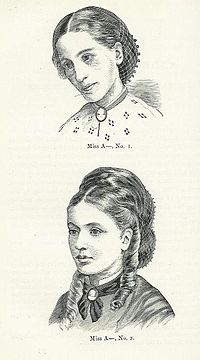
Photo from wikipedia
OBJECTIVE A previously published exploratory factor analysis suggested that the Hypoglycemia Fear Survey-Child and Parent Versions, is comprised of three subscales: Maintain High Blood Glucose, Helplessness/Worry About Low Blood Glucose,… Click to show full abstract
OBJECTIVE A previously published exploratory factor analysis suggested that the Hypoglycemia Fear Survey-Child and Parent Versions, is comprised of three subscales: Maintain High Blood Glucose, Helplessness/Worry About Low Blood Glucose, and Worry About Negative Social Consequences. The primary aim of this study was to confirm this three-factor model with a clinical population of adolescents with type 1 diabetes (T1D) and their caregivers. METHODS Participants included N = 1,035 youth ages 10-17.99 years with T1D, and their female (N = 835) and/or male (N = 326) caregivers who completed the Hypoglycemia Fear Survey independently during a routine medical appointment. We conducted confirmatory factor analysis and examined reliability of the Hypoglycemia Fear Survey and its associations with demographics and clinical outcomes (e.g., mean blood glucose, glycemic control). RESULTS Confirmatory factor analysis supported the three-factor model in youth and female and male caregivers. The internal consistencies for Maintain High Blood Glucose, Helplessness/Worry About Low Blood Glucose, and Worry About Negative Social Consequences were acceptable. The majority of demographic and clinical outcome variables correlated as hypothesized with the three subscales. CONCLUSIONS Using a large clinical sample of adolescents with T1D and their caretakers, we confirmed the three-factor model for the Hypoglycemia Fear Survey, which is sufficiently reliable to be used in a clinical setting. Important areas of future research include examining moderators for the effect of fear of hypoglycemia on clinical outcomes, and possible inclusion of items related to modern diabetes devices.
Journal Title: Journal of pediatric psychology
Year Published: 2021
Link to full text (if available)
Share on Social Media: Sign Up to like & get
recommendations!